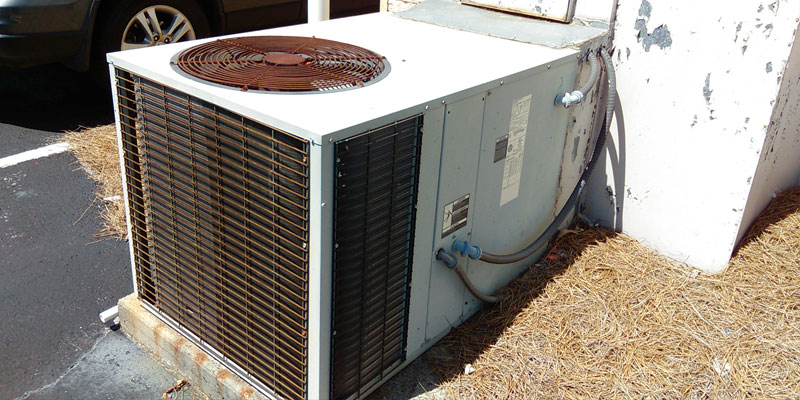
In a cold climate, heat pumps and furnaces are an excellent heating source of choice for many homes. Both heat pumps and furnaces heat a home by removing heat from outside or inside the house respectively. However, these two heating sources work slightly differently from one another. It is important to determine which heating solution best fits your home’s needs to ensure you get the most bang for your buck.
This article will explain the differences and similarities between heat pumps and furnaces in order to help you determine which heating source is best for your home.
All About Heat Pumps
The heat pump was invented in the 1930s, but it wasn’t until much later that this form of heating became popular in residential homes. A heat pump works by transferring heat from outside (in the air or ground) into a building or water supply. There are two different types of heat pumps: air to air heat pumps and air to water heat pumps.
Air-to-air heat pumps transfer heat from the exterior air into the interior environment, usually through a series of plastic pipes that carry refrigerant (like Freon) and then disperse heat throughout the house using systems like those found in forced air furnaces.
Air-to-water heat pumps transfer heat from the exterior air into a water supply, usually through a heat exchanger. Water is then pumped through plastic piping to different parts of the house, where heat pumps release heat to warm the area. This type of heat pump requires specific plumbing and takes up more space than air-to-air heat pumps.
There are several benefits that come with using heat pumps as your primary heating source in your home:
they save you money by reducing energy costs since they work efficiently even on days that aren’t very cold
they work extremely well in extreme temperatures (as low as -15°F)
they don’t emit any harmful emissions or chemicals
they work well in poorly insulated homes
heat pumps can be used to heat both your home and your hot water supply
Heat pump disadvantages include:
low airflow rates (meaning they take longer to heat the house)
noise during operation (they are sometimes described as sounding like a jet engine when turned on)
All About Furnaces
Furnaces were invented in the 1800s and have been heating homes ever since. The furnace heats the air inside the house (similar to how heat pumps heat up water), which then transfers heat into the various rooms by way of vents that lead to different parts of the building. These systems heat a room by transferring heat from one place to another, usually from outside towards the inside, instead of heat being circulated throughout a house from the outside.
The furnace system works by heating up the air inside the unit and transferring it to vents that lead to different rooms in your house through a series of plastic tubing. This heat source is either run off oil or natural gas and can heat a home quickly but does not heat homes as efficiently as heat pumps do.
Other advantages that come with using furnaces as your primary heating option include:
comparatively inexpensive initial costs
widely available parts and installation services
relatively quick install time (usually completed within one day)
Disadvantages associated with furnaces include:
less efficient than heat pumps
requires more maintenance due to fire hazards from the heat exchanger
some heat is wasted when the heat rises and escapes through the chimney
some furnaces are quieter than heat pumps, while others can be quite loud, sometimes sounding like a jet engine
The Main Differences To Note
Both heat pumps and furnaces heat your home using electricity or natural gas in order to transfer heat from one area (outside) to another (interior). However, heat pumps do not produce any harmful emissions and work efficiently in extreme temperatures – whereas furnaces do emit some harmful emissions and may require more maintenance than heat pumps.
In addition, heat pumps can be used to heat both your home and hot water supply, while furnaces only heat the interior of the house through wall vents. These differences in heat source efficiency, heat transfer, heat location, and heat production make heat pumps a more efficient heating option for your home than furnaces.
Ultimately, it is important to consider how much you have invested in your furnace vs. heat pump so far when making this decision since the initial costs are quite different. Furnaces are less expensive than heat pumps but require more maintenance throughout their lifetime compared to heat pumps which may cost you more initially but save you money over time through energy savings.
How to Determine Which Heating Source Is Right For Your Home
The best heating source for your home will depend on several different factors, including how big your house is, what kind of insulation you have, the climate where you live, and whether or not having heat distributed evenly throughout your entire house is important to you. Both heat pumps and furnaces have their advantages and disadvantages, but it is ultimately up to you to determine which heating option works best for your specific situation. Contact one of our professional HVAC technicians today if you’d like help figuring out which heating solution is right for you.
Austin AC is the Top Choice for Heating Services in Austin
Austin AC is a professional heating, air conditioning, and route services company in Austin. We offer heat pump and furnace installation, heat pump repairs, and heat pump servicing to help our customers achieve total home comfort. Call us today for more information about heat pumps vs. furnaces or related heating topics! Our team always provides free estimates on our heating services and can provide quotes via phone or email.
